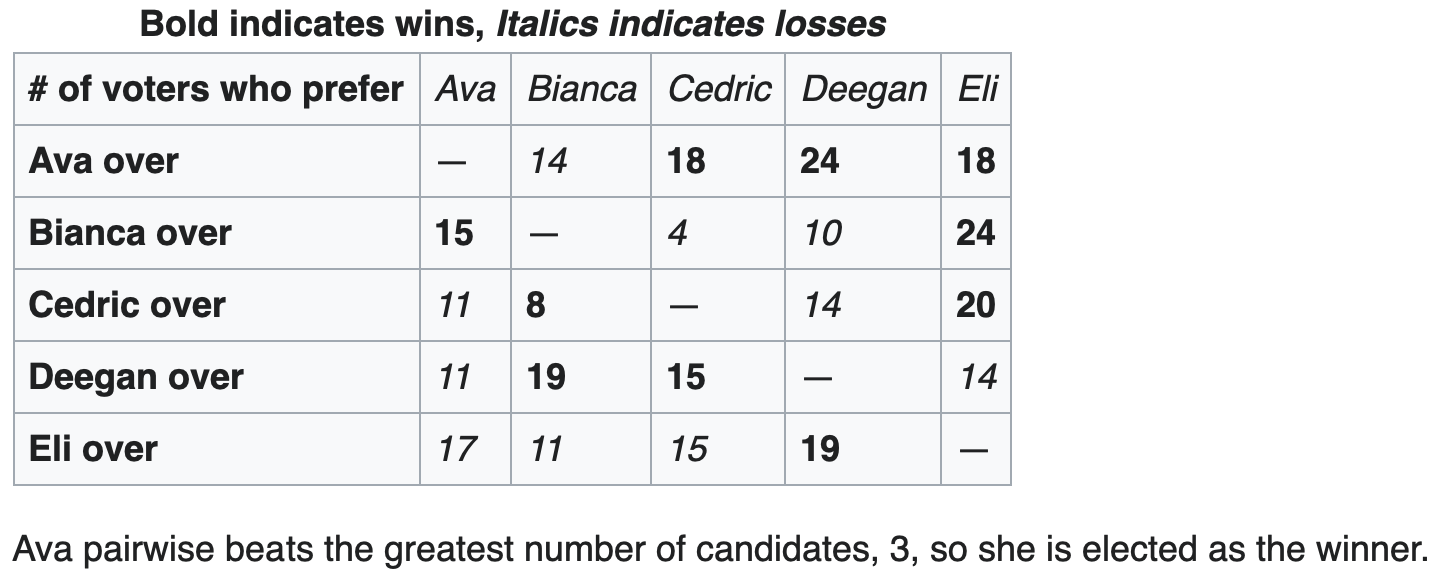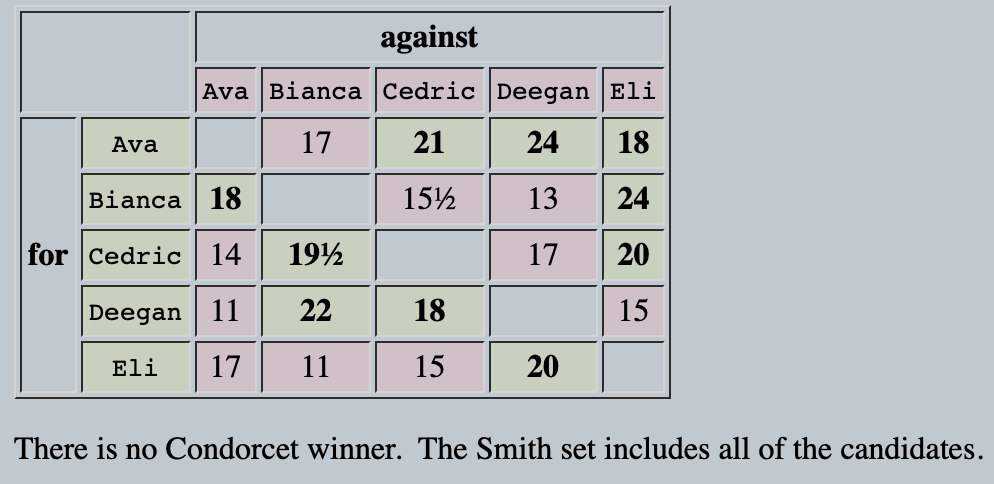Ranked Robin - which preference matrix is correct?
-
8:Ava>Cedric>Deegan>Bianca>Eli
6:Ava=Bianca=Cedric>Eli>Deegan
6:Eli>Ava>Bianca=Cedric=Deegan
6:Deegan>Bianca=Cedric>Eli>Ava
4:Bianca>Ava>Eli>Deegan>Cedric
3:Eli>Deegan>Bianca=Cedric>Ava
2:Deegan=Eli>Bianca=Cedric>Ava-
preference matrix at https://electowiki.org/wiki/Ranked_Robin:

-
preference matrix at - https://www.cs.angelo.edu/~rlegrand/rbvote/calc.html

-
-
This post is deleted! -
Maybe the differences across the values at i, j and j, i are the same and are all that matter? @Sass?
I suspect that the ~rlegrand tool is counting equal rankings by giving a half point to each candidate in the pair.
-
I just manually checked mine (the first one) and it's correct. I suspect the second one counts equal preferences as half points for each candidate in the pairwise comparison. I haven't seen that before, but there is a metric that a voting method could use that would be screwed up by doing it: total number of pairwise preferences over all candidates. That would be sum of the entire row of a candidate. Candidates who are ranked equally to other candidates on more ballots would benefit. However, that's an unreliable metric generally and is really only useful for tiebreaking. So basically my conclusion is that both approaches are correct and should give you the same results, at least for Ranked Robin (not including the 3rd degree tiebeaker).
-
Maybe it would make sense to regard a canonical preference matrix as having only an upper triangle. However, for software, I think it is convenient to represent it using the whole matrix.